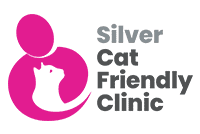Lungworm, also known as “Husk”, is caused by the parasite Dictyocaulus viviparous and is characterised by coughing and heavy breathing. Outbreaks usually occur from July till September but can continue into December and are favoured by mild, wet autumn and winter.
Lifecycle
As with gutworms, the infective stage is the L3 larvae which are picked up from the pasture by grazing cattle.
- Inside the host animal
Once eaten, the L3 larvae pass through the intestinal wall and travel to the lungs. The larvae continue to develop as they pass further into the lung tissue, ending up in the bronchi and trachea, where they mature to the adult worm stage. These adult female worms produce eggs which hatch into the first stage larvae (L1) almost immediately. The L1 larvae travel up, or are coughed up, the trachea, are swallowed and then pass out in the faeces onto the pasture. The time from infection with L3 to larvae appearing in the faeces is approximately three to four weeks.
- Larvae on the pasture
Lungworm is unique in that live larvae are passed in the faeces, rather than eggs. The L1 larvae develop within the dung pat to become the infective stage, L3. This can take 4-12 days dependent on weather conditions, with the rate of development increasing the warmer the weather is.
The initial infection on pasture can come from overwintered larvae (L3) deposited the previous year. However, some animals in the herd can act as silent carriers, with a number of adult worms in the lungs producing eggs and subsequently larvae passing onto the grass.
Just 70 adult worms can produce 2.5 million L1 larvae by 30 days post-ingestion, so it is easy to see how quickly infection levels on pasture can escalate!
Lungworm infection may persist from year to year on pasture due to over-wintered larvae and carrier animals. In the former case, L3 larvae may survive on pasture from autumn until late spring in sufficient numbers to initiate infection and sometimes to cause disease. In the latter case, small numbers of infective larvae can survive in the lungs of infected animals until the next grazing season.
Clinical signs
First season grazing cattle tend to be the most susceptible as they have not had the chance to acquire any immunity prior to exposure.
Clinical signs can vary from mild to severe, and within an affected group there is often a range of signs among animals. In the milking herd, often the first thing to be noticed following infection is a reduction in the bulk milk tank, even before coughing animals have been noticed.
- Mildly affected animals tend only to cough occasionally, especially when being moved.
- Moderately affected animals will cough even at rest and their breathing will be faster and more laboured.
- Severely affected animals show very fast, laboured breathing and in an attempt to get air into their lungs, frequently adopt the classic position of mouth-breathing with the head and neck outstretched. Animals often have a deep harsh cough, frothy mouths and won’t eat.
A small proportion of animals may die from lung damage and it is not uncommon for cattle to develop secondary infections with bacteria and/or viruses. These bugs take the opportunity to infect damaged tissue which has developed after lungworm infection.
The real consequence of lungworm is that even where animals recover there can be significant lung damage with lifelong impact on their productivity and profitability.
Diagnosis
Diagnosis of patent lungworm infestation is based upon the demonstration of lungworm larvae in the faeces, and we can do this “in-house” with a fresh faecal sample, giving you results the next day.
Treatment
All anthelmintics will treat lungworm so speak to your vet about the best option for treating your affected group. Remember that severely affected animals will also need NSAIDs and possibly antibiotics.
Vaccination
Animals can be vaccinated (Huskvac) prior to their first turn out to provide immunity. Two doses of live vaccine need to be given to calves at an interval of four weeks and in order to allow a high level of immunity to develop vaccinated calves should be protected from challenge until two weeks after their second dose. It should be noted that while vaccination is effective in preventing clinical disease, it does not completely prevent the establishment of small numbers of lungworm, so pastures may remain contaminated.
This is important from 2 perspectives, firstly effective vaccination relies on some exposure to provoke long term immunity. Where vaccinated calves are not exposed to lungworm within their first grazing season they will effectively become naïve again by the time of their second grazing season, meaning that a vaccination programme will have to be restarted to avoid being at high risk of disease. Secondly first year grazers should be vaccinated before being exposed to contaminated pasture every year.
The level of immunity of each individual animal combined with the level of threat from lungworm each season is unpredictable. Therefore, even older cattle presumed to be ‘immune’ can be at risk of disease, with milk drop a common outcome in dairy cows: lost milk production could reach £1.50 to £3 per head per day with recovery taking 10 to 20 days after treatment.






